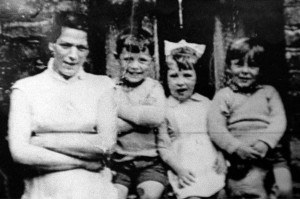Where the bodies are buried, Patrick Radden Keefe’s long piece in this week’s New Yorker, is a grim read, but fascinating, and infinitely sad.
I’m not sure how I came to follow Gerry Adams on Twitter, but I do, and it’s hard to reconcile the accusations that he ordered murders with the slightly oafish, avuncular persona I read daily. To wit:
Drat! Left My Crocs In Derry!
— Gerry Adams (@GerryAdamsSF) March 9, 2015
Having said that, I find the accusations credible. But it’s a tangled mess. Many of Adams’ accusers who spoke to the Boston College oral-history project were “former Republicans who have accused Sinn Fein of betrayal,” according to a representative speaking for Adams. Which is true, but doesn’t invalidate their testimony.
Similarly, Jean McConville, the woman murdered allegedly on Adams’ orders, was a widow and a mother of ten. It doesn’t beggar belief that a woman in her predicament would be vulnerable to the blandishments (or threats) of British spies looking for low-level informers. Murdering a woman mired in such circumstances seems unusually cruel, whether she was a tout or not. The facts are murky there as well.
One of the creepiest aspects of this: the buggering holy men lurking in the background. After McConville disappeared, the state broke up the family; the younger children were “dispersed to different orphanages.” One son, Michael, “recalled an orphanage where monks walked through the dormitory at night with a roving flashlight, taking boys from their beds.” (It also came out in a 2013 trial that Adams’ own brother was a “pedophile who had molested his own daughter, and that Adams had known but done little to intervene.”)
Keefe notes that Northern Ireland has yet to see (and will probably never see) a “truth and reconciliation” process similar to South Africa’s, and evokes the great Seamus Heaney’s characterization of Ireland’s bogs as “a landscape that remembered everything”:
In Northern Ireland, where roughly thirty-six hundred people were murdered during the Troubles and some forty thousand wounded, there has been no comprehensive accounting. A recent report by Amnesty International criticizes the “piecemeal” investigations of historical abuses, and suggests that, “across the political spectrum, it is those in power who may fear that they have little politically to gain—and possibly much to lose—from any careful examination of Northern Ireland’s past.” In 1999, with the encouragement of Bill Clinton, the British and Irish governments established the Independent Commission for the Location of Victims’ Remains, and the I.R.A. agreed to identify the graves of nine people who had been murdered and secretly buried during the Troubles, but only after securing a promise that no criminal prosecutions would result. The I.R.A. declared that some of the disappeared had been informers, including Jean McConville. Michael and his siblings angrily rejected this characterization, yet they had little choice but to work with the I.R.A. to search for her remains.
Much of the Irish landscape is dominated by peat bogs; the anaerobic and acidic conditions in the densely packed earth mean that the past in Ireland can be subject to macabre resurrection. Peat cutters occasionally churn up ancient mandibles, clavicles, or entire cadavers that have been preserved for millennia. The bodies date as far back as the Bronze Age, and often show signs of ritual sacrifice and violent death. These victims, cast out of their communities and buried, have surfaced vividly intact, from their hair to their leathery skin. The poet Seamus Heaney, who harvested peat as a boy on his family’s farm, once described the bogs of Ireland as “a landscape that remembered everything that had happened in and to it.”
Ah, here we are, back in the bogs. Which brings me round (again) to that last passage of O’Connor’s “Guests of the Nation,” which I’ve been obsessing over since I re-read it a month ago. Deaths, reprisals, repeat. It’s a story about the same civil war, only nearly a century earlier, and it ends with two captured English soldiers stiffening into a bog. The infinite sorrow of its final lines still seems apt:
Noble says he saw everything ten times the size, as though there were nothing in the whole world but that little patch of bog with the two Englishmen stiffening into it, but with me it was as if the patch of bog where the Englishmen were was a million miles away, and even Noble and the old woman, mumbling behind me, and the birds and the bloody stars were all far away, and I was somehow very small and very lost and lonely like a child astray in the snow. And anything that happened to me afterwards, I never felt the same about again.
